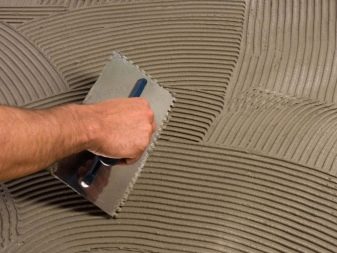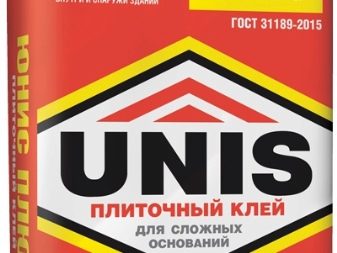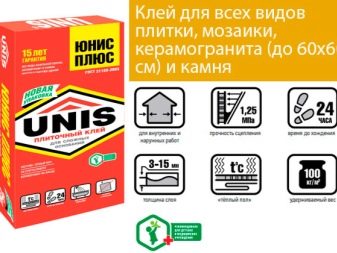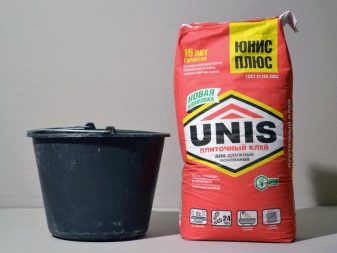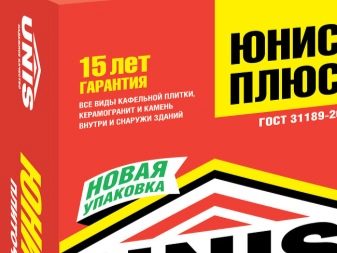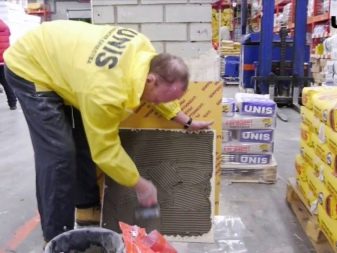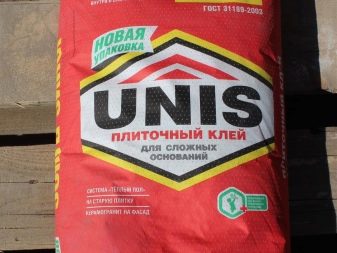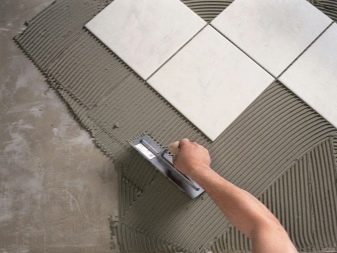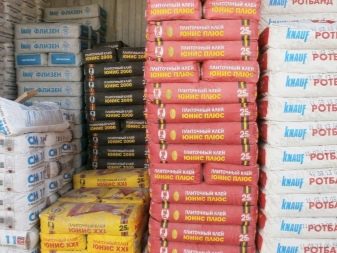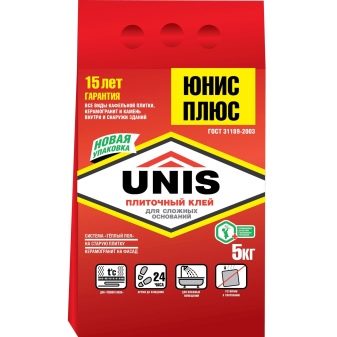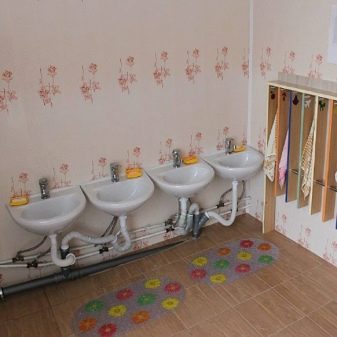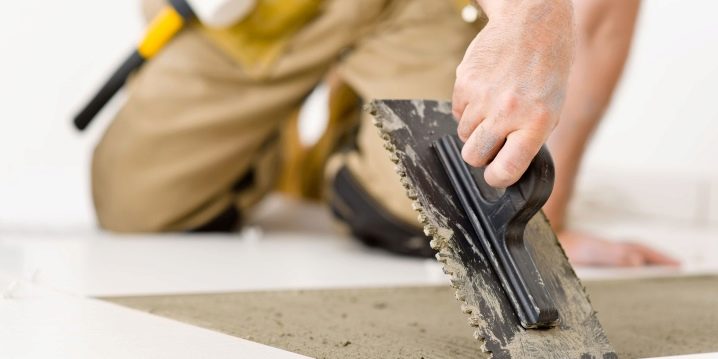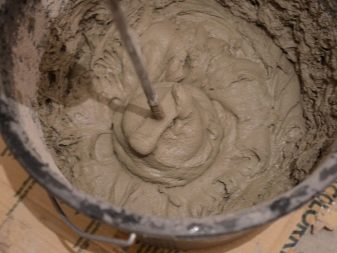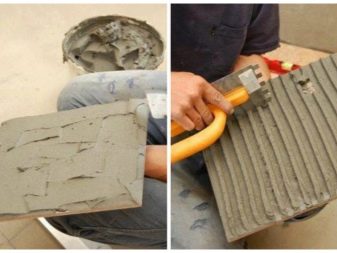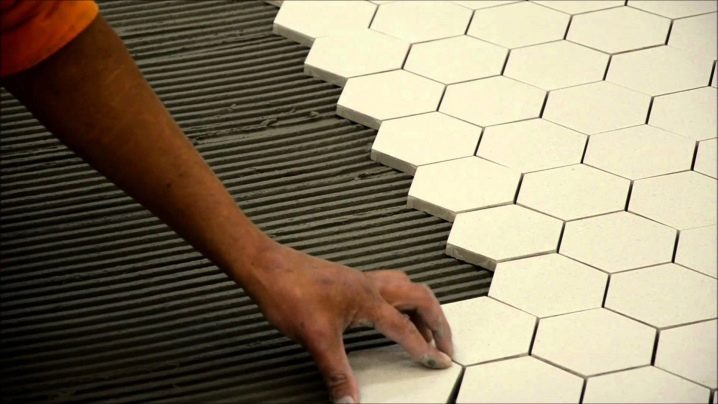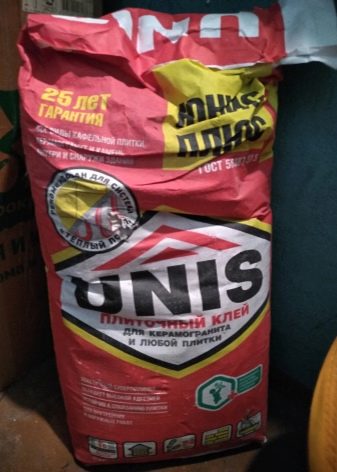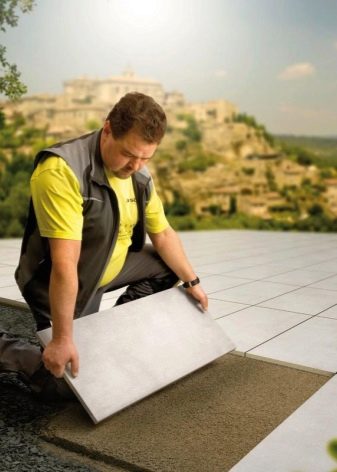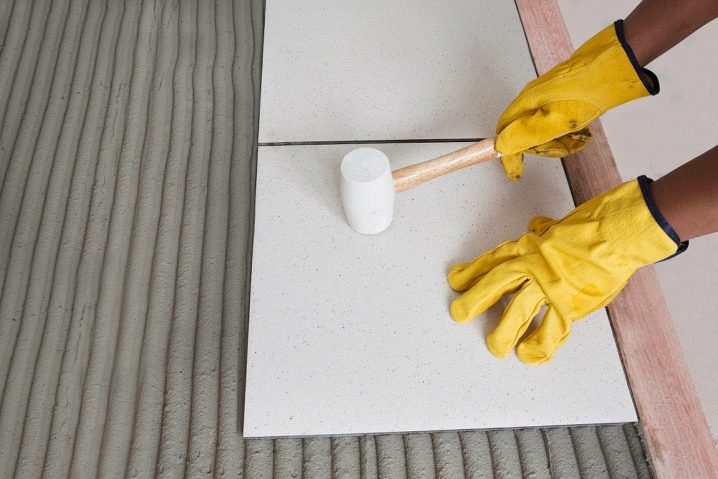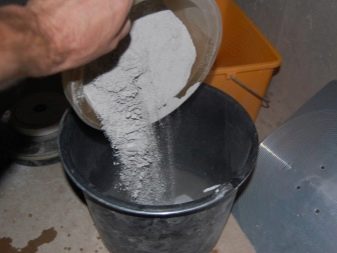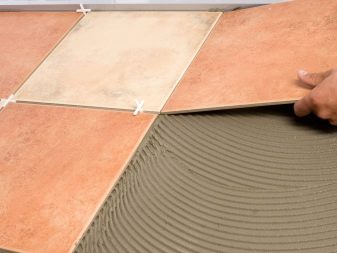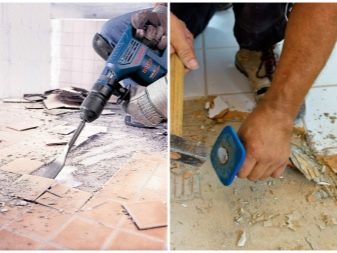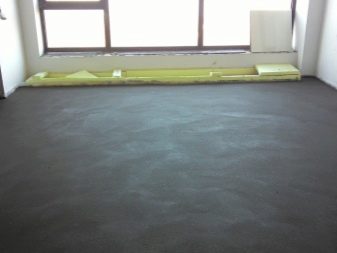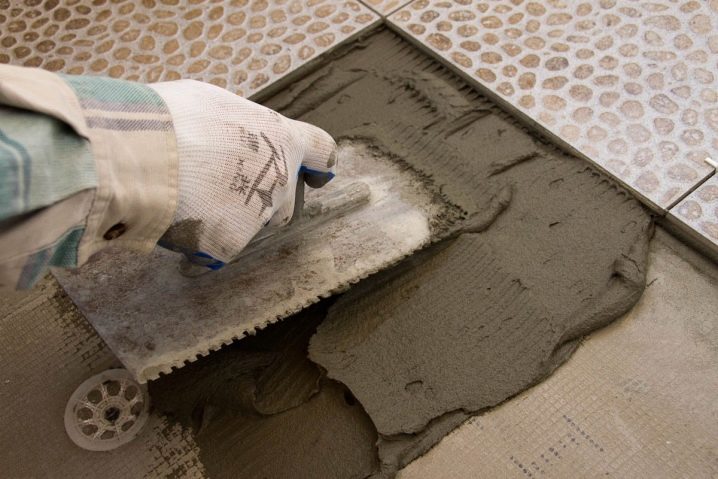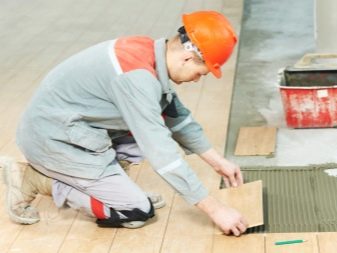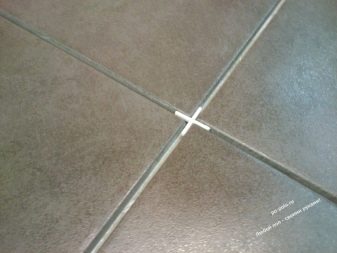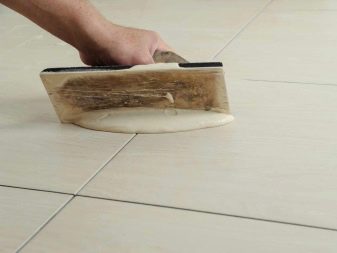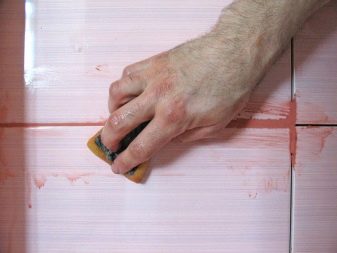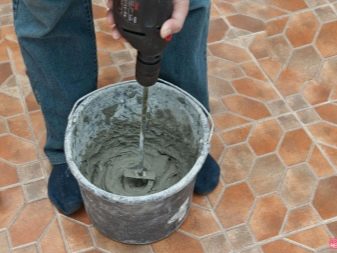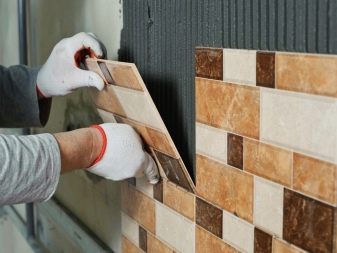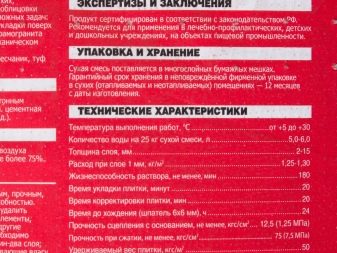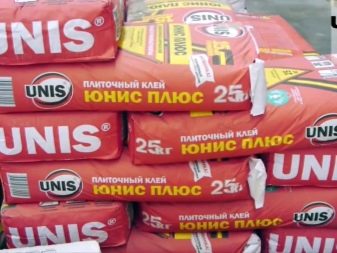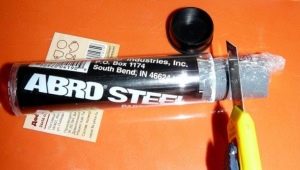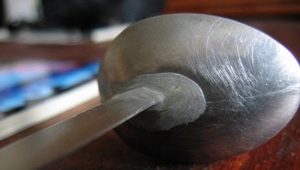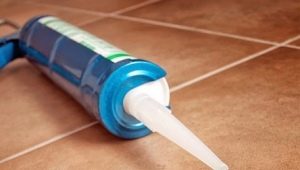Unis Plus glue: advantages and scope
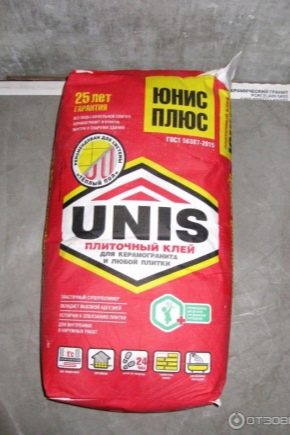
Choosing a quality tile adhesive is not as simple as it seems, since modern brands offer a huge range of similar products. However, in the midst of all this diversity, many customers prefer Unis Plus glue. To understand its demand, you need to know the features, specifications, advantages and disadvantages.
Special features
Tiled Unis Plus glue is development of the domestic producer who is engaged in production of plaster mixes more than 20 years. It is designed for indoor and outdoor use. The product is a dry mixture with a balanced formula, characterized by a grayish tint. It is sold in packs of 25 kg, in addition, if desired, you can purchase the option of packing 5 and 23 kg.The basis of tile glue is cement, in addition to it, it includes mineral fillers and chemical reagents. Due to them, the material acquires high technical characteristics.
This glue is included into group of universal materials for finishing and is intended for work with not deformed types of the bases. This composition is suitable for work with finishing buildings above the basement. It can be used to finish the vertical and horizontal planes inside the premises with normal and high degree of humidity. The adhesive is characterized by high strength, which distinguishes it from other varieties of adhesive brand analogs. It can be used with the device "warm floor" when you have to work with complex grounds.
In addition, the mortar can be laid on an old tile coating, while the glue firmly fixes the tile to the working surface. Having a high adhesive ability, you can put the fragments reception from top to bottom. In addition to the "warm floor" system, this glue allows lining on overlappings heated to +70 degrees. Due to its plasticity, it is distinguished by its ease of operation, it does not flow down from the vertical bases, and this simplifies the process of fixing the dies.After the glue gains its strength, it does not change its characteristics upon contact with water, as well as at a large sub-zero temperature.
Scope of use
The type of the basis during the work with this tiled glue can be a miscellaneous. For example, by means of this composition it is possible to glue tiles to concrete floors, including cellular concrete and cinder. In addition, it fixes dies well to cement, brick surfaces, plaster floors (GKL, GVL, GWP). And also it suits, when asphalt is a working basis. In working with this glue, you can use tile, ceramic tile, porcelain tile, natural and artificial stone, as well as mosaic, whether it is an option in the form of individual dies of small size or a modern analogue on a special grid with a lined pattern and identical distances between the elements.
Like other analogues, the mixture has a certificate of compliance with safety standards.that allows you to use it in the decoration of children's institutions (gardens, schools, clinics, special developmental and gaming centers, studios). This glue allows you to perform high-quality and durable facing terraces and gazebos.It is used for structures not only closed, but also of open type. This composition is actively used for decorating staircases. For example, together with the original tile, it allows you to give a stone staircase a more aesthetic look, ennobling them and making the interior of the room special. In fact, it is used everywhere: in medical institutions, industrial facilities, decoration of offices, private and apartment buildings. At the same time, it is appropriate in almost any room of the dwelling, whether it be a home library, an office, a bay room, a shared or separate bathroom, a kitchen, a living room, or another room.
Advantages and disadvantages
Tile adhesive Unis Plus has a lot of advantages, due to which it is in demand from professional craftsmen in the field of construction and ordinary buyers. For example, it is an ecological raw material for construction and finishing works. It does not emit toxic substances, therefore it is harmless during installation, as well as during the entire operation of the finished coating. It is produced by modern technology, which allows to achieve a high quality dry mix and a high degree of adhesion.Due to the sufficient life cycle, which the glue possesses, the master-tiler has enough time for laying each element and adjusting it.
Mix solution is economical and in most cases eliminates overruns. It is easy to work with it, because it can even out minor unevenness of the foundation in the process of carrying out facing work. The size of the tile can be any - from a small 10x10 cm to a large 60x60 cm. The adhesive is resistant to various temperature fluctuations. Unlike many other formulations, it can be used when facing walls and floors of rooms with a high degree of humidity. For example, he perfectly copes with the lining of the bathroom and kitchen, it is appropriate for laying the floor in the hallway, on the balcony or loggia. If you use it on top of the “warm floor” system, it will be possible to operate the coating 28 days after the end of the work.
The mixture is characterized by an acceptable cost that allows you to expand the circle of buyers, and will not hit the budget when it is planned to veneer with the help of large areas of glue. This is an enhanced balanced formula. The composition stands out from the general line of domestic producers not only plasticity, but also ease of preparation. It belongs to the professional compositions.It is included in the ranking of the best plaster mixes.
One of the disadvantages of Unis Plus is its color: the gray tint does not allow the composition to be used for transparent and translucent facing materials, since the base color of the lining will be disturbed. It is important to consider the size of the large cladding. For example, it is impossible to glue a stone with a weight exceeding 100 kg / m² with this glue. At the same time, the area of the slab should not exceed 0.35 m². In addition, for a flawless and durable finish, you need to carefully prepare the foundation, which will take not only time, but additional expenses for primer and plaster material will be needed. The material is not designed for global leveling of the base, the maximum defect should not exceed 5 mm in depth. Another disadvantage is the fact that the composition does not provide for the lining at a sub-zero temperature, despite the fact that operation in the cold is possible.
Specifications
Physicomechanical Characteristics of tile adhesive Unis Plus look like this:
- the life cycle of the working solution is 3 hours;
- laying time should not exceed 20 minutes from the date of application of the solution on the working surface;
- the time for correction of the placed fragment should not exceed 10 minutes;
- layer thickness range depending on the length of the trowel teeth - 3–15 mm;
- temperature regime during the lining - from +5 to +30 degrees;
- compressive strength is 7.5 MPa;
- air humidity in the room at the time of work - no more than 75%;
- the amount of water per 25 kg bag is 5–5.5 l;
- approximate consumption per 1 m² with a spatula teeth length - 3.5–4.5 kg / m²;
- frost resistance is at least 35 cycles;
- raw material consumption with a thickness of 1 mm is 1.25–1.30 kg / m²;
- the weight of the tile held together with glue is 100 kg / m²;
- drying time of the mortar under the tile is 24 hours;
- operating temperature of the finished coating varies in the range from -35 to +70 degrees;
- adhesion level with a working base reaches 1.25 MPa.
The mixture requires proper storage. It is important that it be in a dry room, and the craft bag in which it is located is not damaged. At the same time, it cannot be put on a cold floor: the bag should stand on a wooden pallet. If these conditions are met, it is possible to store a dry lining compound for no more than 12 months from the date of its production.
Foundation preparation
Not a single tile adhesive will hold on for a long time and firmly if you do not make preliminary preparation of the base.To do this, the surface is cleaned of the old coating, remove everything that does not hold up and exfoliate badly, since the lining will not stay well on such a basis for a long time. After that, the base is dedusted using a semi-dry sponge. Then work surface strengthened through a primer solution, using the composition of deep penetration. After the soil has degreased the surface, the microparticles of dust and tiny cracks bind, the surface is smoothed with rough plaster. Then again ground. After the soil is dry, you can begin facing the surface.
Instructions for use
Glue is diluted according to the instructions specified by the manufacturer on the back of the package. It should be diluted before the immediate start of the workflow. At observance of the proportions specified by the seller, the master turns out a pasty mass of a uniform consistence. After the initial mixing, the solution is left and re-stirred for 5–7 minutes. Then proceed to the main process. The glue is collected with a trowel and spread on a small section of the wall (approximately 2–4 tiles of small size).After it is carried out with a notched trowel, removing excess mass. Then they take a plate and spread glue on its back surface. The excess is again removed with a notched trowel. But now in the direction perpendicular to that on the working surface. This will avoid air pockets and will contribute to a stronger adhesion of the composition with the tile and the base.
Then the plate is pressed to the base and slightly shifted back and forth, and then set in place. Shifting will also get rid of excess voids. After installing in place of the first element take the second and in exactly the same way set it next to the first. However, it is already necessary to observe the same voids between the elements, since the different distances between the parts will make the finished look of the facing untidy. The size of the seams depends on the size of the element. Usually, the larger it is, the greater the gaps can be, however, the craftsmen do not recommend making the seams too wide in the finish, because the seams themselves are a sore spot of the finished tiled covering. Too narrow distances will produce non-ideal geometry.
In order not to suffer with each distance and crosshairs, it is better to use special crosses. This will allow you to control the distance between the dies and see when it is not enough (the crosses should not fall out, they should be pressed well with tiles). At the end of the work you need to immediately wash your inventory. Remove excess glue is necessary in the process. You can not do this when the composition hardens, and even scouring from the tile. From this scratches on the surface.
After the solution under the tile dries, remove all the crosses that were used when laying. After taking the trowel mixture, dilute it as indicated in the instructions (usually also add water) to the consistency of sour cream. After it, all the voids between the trim elements are filled, and then the entire surface is wiped with a dry sponge, removing the excess mixture. This finish ends, however, some masters, after the grout dries, process the finished coating with a special spray in the form of an aerosol.
When performing facing works, it is important to start each subsequent stage only after the used material of the previous one has dried.Otherwise, the finished coating will not hold on to the base for a long time without the need for repair.
Professional Tips
When working with tile glue Experts recommend to pay attention to a few nuances.
- The longer the glue is stirred by the automatic method, the shorter its life cycle, which can shorten the running time and adjustments. It is better to mix the solution at a low speed of the construction mixer.
- For the identity of the seams between the elements, you can use not only plastic crosses, but also special clips. With their help, you can give the finished surface a look of professional styling with a perfect fit to the dies.
- The larger the size of the tile used in the work, the longer must be the teeth of a notched trowel.
- Glue can not be applied immediately to the entire work surface. This is done partially, spreading a ready-made mortar on the basis of the approximate area, which can be glued in 10-15 minutes. This is due to the fact that over time, the composition applied to the base will change its properties, worsening the level of adhesion. It is necessary to glue the tile to it immediately after application.
Reviews
Tiled Unis Plus glue in red packaging is marked by a high customer rating, as evidenced by reviews on the Internet. According to their opinions, it is easy to use, does not slip from the walls with vertical tile laying, dries optimally quickly and does not crack under the tile with time. In this case, the mass is really economical. And in the case of a small missing volume, it can be purchased separately, choosing a packing of 5 kg.
Review on Unis Plus glue in the next video.
